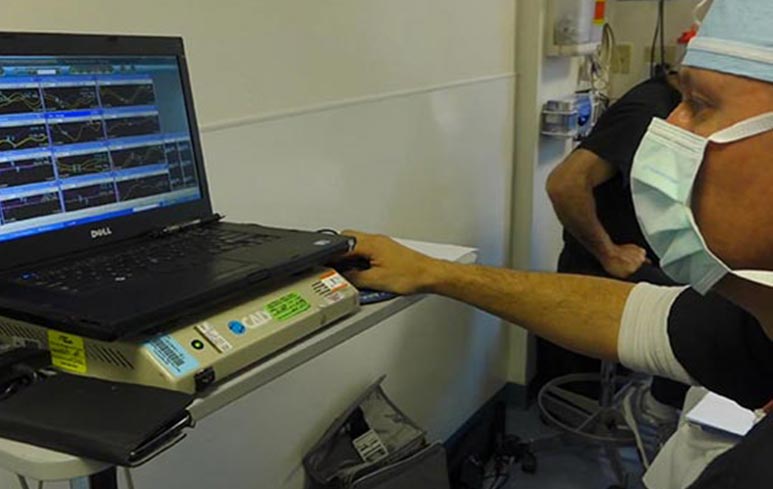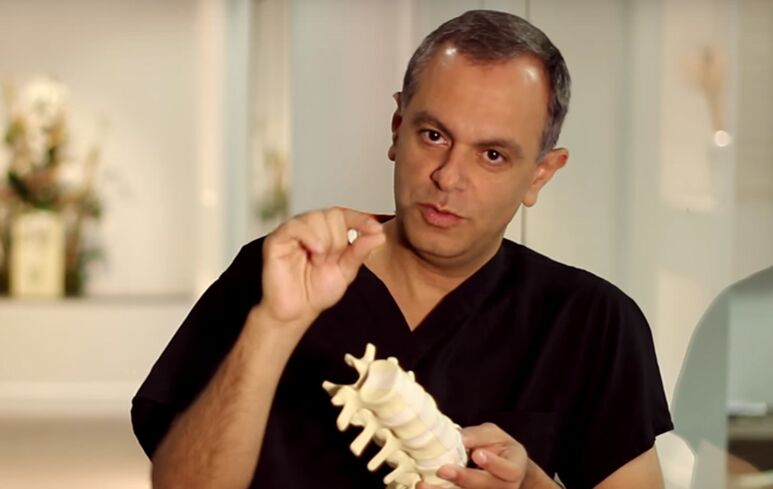 The spinal column houses numerous nerves that connect the brain to every part of the body; therefore, diagnosing the root cause of back pain is not always a straightforward process. For example, some patients may experience chronic pain in their neck, but conservative diagnostic methods, such as an MRI or CT scan, may not narrow down the direct cause. When non-surgical treatments fail to alleviate the pain, the board-certified spine and neurosurgeons at ProMedSPINE may conduct a discogram to further investigate whether the spinal discs are the source of the pain.
The spinal column houses numerous nerves that connect the brain to every part of the body; therefore, diagnosing the root cause of back pain is not always a straightforward process. For example, some patients may experience chronic pain in their neck, but conservative diagnostic methods, such as an MRI or CT scan, may not narrow down the direct cause. When non-surgical treatments fail to alleviate the pain, the board-certified spine and neurosurgeons at ProMedSPINE may conduct a discogram to further investigate whether the spinal discs are the source of the pain.
Dr. Todd Gravori and his team of board-certified neurosurgeons and spinal surgery specialists take an individualized approach to diagnosing and treating each patient. We are dedicated to providing our patients with the answers and relief they need from spinal pain and injuries. To learn more about discography or to schedule a consultation with our doctors, please contact ProMedSPINE today.
What is a Lumbar Provocative Discography?
A lumbar provocative discography (also known as a discogram) is a diagnostic test used to determine whether the spinal discs that cushion each vertebra of the spine are abnormal or damaged. In many cases, magnetic resonance imaging (MRI) can be used to identify abnormalities, but it does not always accurately indicate whether the abnormality is causing pain.
During a discogram, the spine surgeon will insert a needle into the center of a disc with the help of fluoroscopy to ensure the needle is accurately placed. The surgeon will then inject contrast (radiographic) dye into the disc, which will show up on an X-ray. For some patients, injecting the dye alone recreates the painful sensations that the patient normally suffers, helping to identify the disc that is causing pain. If the disc is not damaged, the contrast dye will remain in the center of the disc; however, if the disc has torn or degenerated, the contrast may spread out of the disc, indicating the severity of the damage.
It is important to note that disc abnormalities or damage do not always cause pain; therefore, the surgeon will ask the patient to rate the level of pressure and/or pain as each disc is injected to gauge which disc(s) cause the familiar, everyday pain.
Click here to learn more about discograms.
Types of Discograms
The exact discography exam will vary depending on the patient’s symptoms and the location of the pain.
- Cervical Discogram: If pain is located at or radiating from the neck, including the shoulders or arms, the discs along the cervical spine may be examined.
- Thoracic Discogram: When the pain is located in the mid-to-upper back or radiates to the ribs or abdomen, the discs along the thoracic spine may be evaluated.
- Lumbar Discogram: If there is pain in the lower back, hips, buttocks, or legs, the discs in the lumbar spine may be examined via discogram.
Who is a Candidate?
As the least minimally invasive procedure, discography is performed only when patients have undergone non-surgical measures, such as physical therapy, exercise, and medication, but continue to experience pain. It is used as a diagnostic tool, not as a method for back pain management. It is not recommended for patients that are allergic to contrast dye, have an active or local infection near the injection site, or have other health issues. It is crucial to discuss your specific health issues and concerns with Dr. Gravori or a member of his staff to determine whether you are a viable candidate for a discogram.
Contact Los Angeles Back Pain Experts
Spinal and neurological injuries and disorders can seriously impact an individual’s quality of life and psychological well-being. To speak with a member of ProMedSPINE’s knowledgeable and compassionate team, please schedule an appointment online. A pain-free life is just a click away.
Next, learn about chronic back pain.
